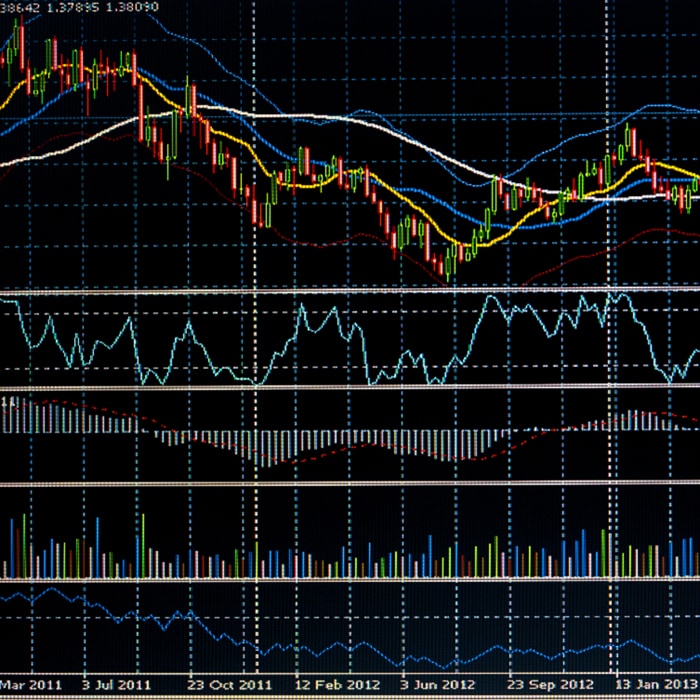Net investment hedging under ASU 2017-12 has been saved

Analysis
Net investment hedging under ASU 2017-12
Bring new life to foreign exchange risk management strategies
US companies with investments in foreign operations are looking anew at net investment hedging. Higher risk-free interest rates in the United States versus many other parts of the world and the Financial Accounting Standards Board® (FASB’s) new hedge accounting standard are reasons why. ASU 2017-12 simplifies hedge accounting, including net investment hedging. In some cases, this can be an integral part of an entity’s foreign exchange risk management strategy.
Explore content
- Reducing income statement volatility
- The timing mismatch
- Assessing hedge effectiveness
- Cross-currency interest rate swaps
- Summing it up
Reducing income statement volatility
A net investment hedge is designed to mitigate an entity’s exposure to changes in the value of its net investment in a foreign operation that could occur as a result of changes in foreign exchange rates between a foreign investee’s local currency and the investor’s reporting currency. The idea is to reduce foreign currency exchange risk and potential income statement volatility by offsetting a rise or fall in the value of the foreign investment (due to the exchange rate movements) with corresponding changes in the value of a hedging instrument.
The timing mismatch
But timing is everything. Absent the application of hedge accounting, companies pursuing a net investment hedging strategy must measure their derivatives at fair value each reporting period and recognize any changes in fair value in the income statement. Without hedge accounting, the timing of this recognition may not align with the timing of the hedged risk’s effect on earnings. ASU 2017-12 addresses this timing mismatch by clarifying that, depending on how the hedge is designated, some or all of the changes in the fair value of the hedging derivative instrument may not be reported in the income statement immediately. Instead, they will be recognized in other comprehensive income—that is, the cumulative translation adjustment (CTA) account—and remain in accumulated other comprehensive income (AOCI)/shareholders’ equity until the hedged net investment is sold or substantially liquidated.

Assessing hedge effectiveness
How can companies gauge the effectiveness of a net investment hedging relationship? There are two ways: the forward method and the spot method. As a result of changes made by ASU 2017-12, companies considering a net investment hedging strategy may find the spot method more attractive than in the past. First, companies that (1) designate a qualifying derivative as the hedging instrument, (2) assess hedge effectiveness using the spot method and (3) apply the amortization method would exclude all changes in the fair value of the hedging instrument other than those attributable to changes in the spot rate from the assessment of hedge effectiveness and record such changes in fair value in CTA instead of current earnings. In addition, no periodic ineffectiveness would be recognized. Under the amortization method, the initial value of the excluded component would be recognized in earnings over the life of the hedging instrument using a systematic and rational amortization method.

Cross-currency interest rate swaps
For companies with foreign operations in jurisdictions with lower risk-free interest rates than in the US, application of the spot method of assessing hedge effectiveness for net investment hedges, in which the hedging instrument is a qualifying cross-currency interest rate swap, can result in lower reported interest expense, and therefore a lower effective interest rate. At the same time, companies that apply the amortization method may be able to avoid the unpredictable income statement volatility resulting from the recognition of changes in the fair value of the excluded component of the cross-currency swap. Keep in mind, though, that the same method of assessing hedge effectiveness must be used for all net investment hedges in which the hedging instrument is a derivative. So, companies with multiple net investment hedges may not see a favorable rate differential in all jurisdictions.

Summing it up
A properly applied net investment hedging strategy can produce an economically effective hedging relationship. In addition, companies also have an opportunity to reduce overall interest expense when hedged investments in foreign operations are domiciled in a region with comparatively lower interest rates and qualifying cross-currency interest rate swaps are used as the hedging instrument. Given these new opportunities, multinational companies are encouraged to understand the simplified rules under the new hedge accounting standard, ASU 2017-12, and then take another look at net investment hedges as part of an effective foreign exchange risk management strategy.

The services described herein are illustrative in nature and are intended to demonstrate our experience and capabilities in these areas; however, due to independence restrictions that may apply to audit clients (including affiliates) of Deloitte & Touche LLP, we may be unable to provide certain services based on individual facts and circumstances.
Recommendations
Revenue recognition methods
On the Radar: ASC 606



